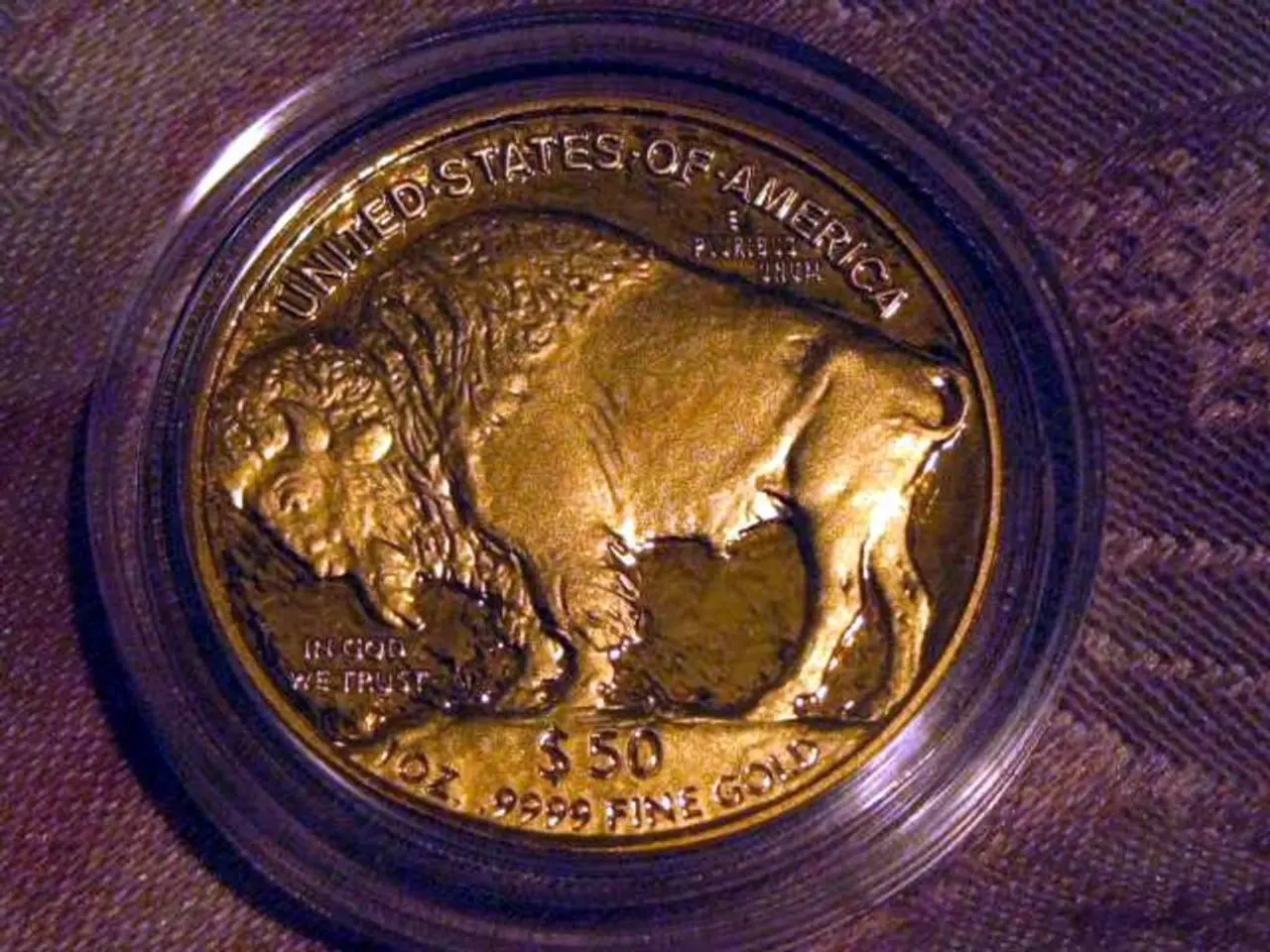Markets see a rise as uncertainties over budget and trade issues escalate
In the turbulent economic landscape of 2025, gold prices have surged significantly, driven by a perfect storm of US fiscal concerns and global trade uncertainties. From January to June, the price of gold for July delivery has increased by around 30%, reaching peaks above $3,500 per troy ounce.
The US Dollar index has plummeted by around 10.8 percent due to central banks reducing their dollar exposure, eroding confidence in the dollar as a safe haven. This, coupled with the US debt exceeding $36 trillion, has led to interest payments alone projected to exceed $1 trillion annually. The debt-to-GDP ratio is over 120%, a level not seen since World War II, triggering credit rating downgrades and eroding investor confidence.
Fiscal concerns have manifested in the bond market through rising US Treasury swap spreads, indicating investor reluctance to absorb government debt at prevailing prices. This leads to upward pressure on bond yields and correlates strongly with rising gold prices, as investors turn to gold amid worries over US debt sustainability.
Trade and policy uncertainty have also played a significant role. Trade tensions and tariff policies, including delays and disputes with countries like Japan, China, and the EU, contribute to market instability. Political uncertainty, exemplified by the US administration’s proposed large tax bill and tariff threats, spurs investors to use gold as a hedge against potential inflation, currency depreciation, and systemic risks.
The ongoing US-China trade negotiations and the approaching tariff deadline of July 9 have kept markets on edge. The EU is preparing to make concessions to sign a deal with the US, while the US Senate passed a mega tax-and-spending bill on Tuesday, projecting to add $3.3 trillion over the next 10 years to the national debt.
If the bill becomes a law, it is expected to tip the scales towards easing interest rates, as indicated by last week's hint from Federal Reserve Chair Jerome Powell about adopting a "wait-and-watch" approach to interest rate cuts. President Donald Trump has publicly urged the Fed to lower rates, and there are rumours of him considering replacing the current Chair.
In the midst of these economic uncertainties, the ongoing ceasefire between regional rivals Israel and Iran, brokered by Trump on June 24th, is holding so far. The possibility of US-Iran nuclear talks is also under consideration, which could have far-reaching implications for global trade and the US dollar.
The US non-farm payrolls data is awaited tomorrow, and weak growth could further tip the scales towards easing interest rates. However, ADP reported that private businesses in the US shed 33,000 jobs in June, marking the first decline since March. This could signal a slowing economy, adding to the appeal of gold as a safe-haven asset.
Analysts predict that the price of gold will move based on the US Fed’s decisions. Reflecting these factors, gold prices are expected to continue their upward trajectory, with expectations that gold could reach $3,675/oz by late 2025 and even $4,000/oz by mid-2026, bolstered by recession risks and ongoing trade tensions.
Investors seeking protection against fiscal instability, inflation, and geopolitical risks are increasingly turning to gold, reinforcing its strategic role in portfolios under current macroeconomic conditions. The ongoing US fiscal concerns and global trade uncertainty have significantly supported and driven gold prices higher in the recent period.
- Amid the surge in gold prices, concerns over US fiscal stability and global trade uncertainties have caused a plummet in the US Dollar index.
- As the US debt exceeds $36 trillion, interest payments alone are projected to exceed $1 trillion annually, leading to credit rating downgrades and eroding investor confidence.
- Fiscal concerns, trade tensions, and political uncertainty have driven investors to use gold as a hedge against potential inflation, currency depreciation, and systemic risks.
- In the coming months, analysts predict that gold prices will continue their upward trajectory, fueled by recession risks and ongoing trade tensions, making gold an increasingly attractive investment option for those seeking protection against macroeconomic instability.




